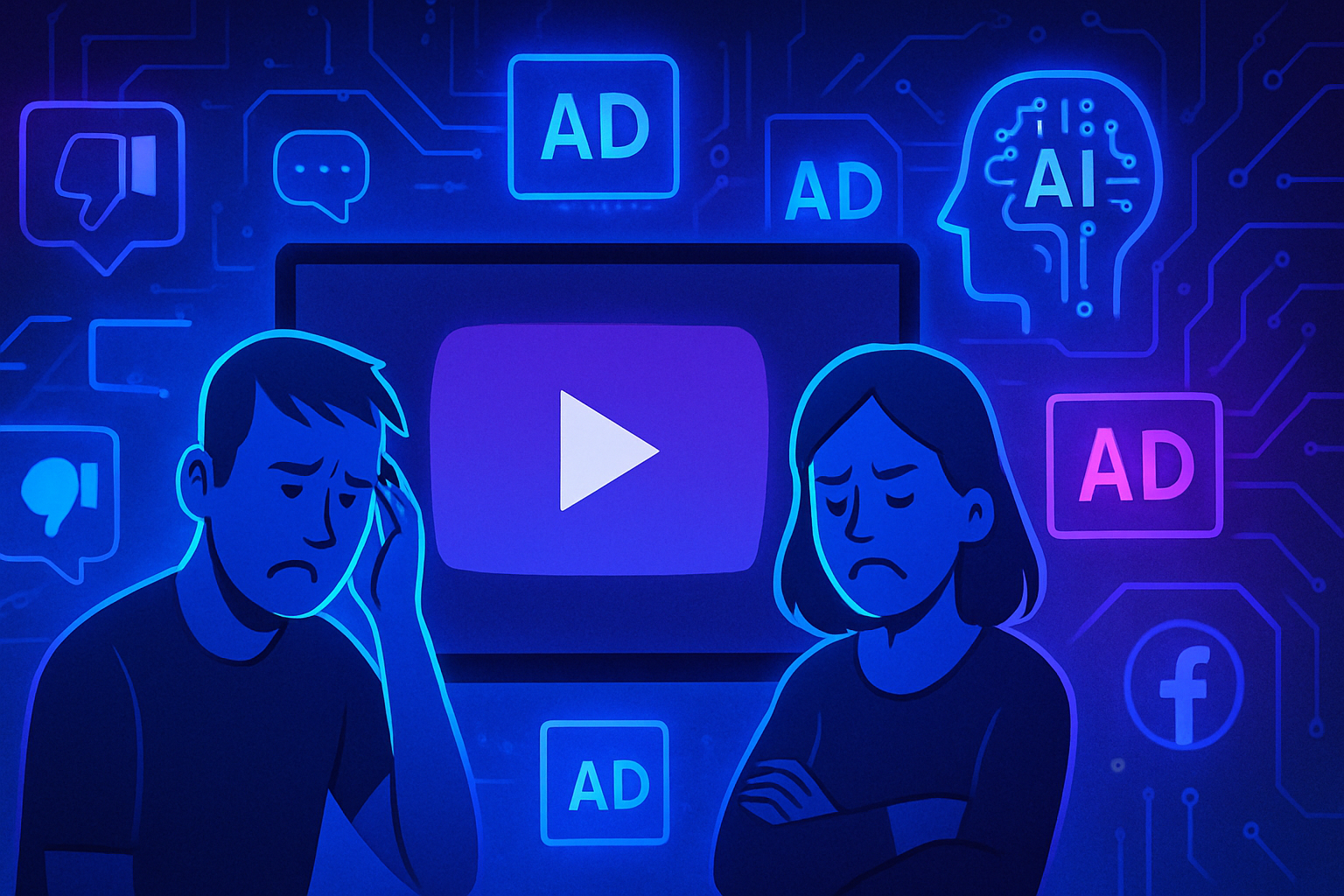The bizarre intrusion of Google’s artificial intelligence into the world of YouTube is generating a torrent of controversies. The new advertising format, dubbed Peak Points, could exacerbate user dissatisfaction with intrusive interruptions. *Advertisers are rubbing their hands together*, while viewers are questioning the relevance of these choices. A thorough analysis reveals the stakes of *communication that borders on the pathetic*, as everyone scrutinizes the future of advertisements on this essential medium. This initiative risks alienating users, plunging the visual experience into an unprecedented commercial chaos.
Advertisements at critical moments
Viewers have often expressed their irritation at the airing of advertisements during the peak tension moments of a program. This is observed both during a football match and during a thrilling scene in a movie. Broadcasters exploit these moments to maximize the impact of their ads. Viewers, already captivated, are then caught in a trap.
Emergence of Peak Points
With the advent of YouTube, this broadcasting model has been disrupted. Traditional advertising formats such as pre-roll, mid-roll, and post-roll are losing their relevance. At the recent Brandcast 2025 in New York, YouTube introduced a new feature, called Peak Points. This innovation, relying on artificial intelligence via Google Gemini, aims to insert ads within videos at deemed critical moments.
User reactions
The initial reactions from users are mixed, with many expressing their discontent with this approach. The Peak Points seem to disregard the user experience, proposing ads during the cherished moments of a video. This method could bring more frustration than anything else, turning a pleasant visual experience into a series of intrusive advertisements.
Upcoming advertising innovations
The Brandcast 2025 also reported new advertising options, such as Masthead, allowing ads on YouTube’s homepage. A Shoppable feature is also expected to enable viewers to buy products directly from the videos. However, the adoption of Google Gemini for these formats remains uncertain. Concerns about intrusive advertising could intensify, fueling general dissatisfaction.
Implications for the future of YouTube
The evolution of advertising formats raises questions about the future of YouTube. Users are wondering if the optimization of advertising revenue would take precedence over their satisfaction. The fears expressed by viewers could become a significant element to monitor. The balance between ads and viewer experience could be the key to the platform’s long-term sustainability.
Frequently Asked Questions about the impact of Google’s AI on YouTube ads
How does Google’s AI affect the timing of ad placements on YouTube?
With the help of AI, YouTube is capable of analyzing videos and selecting the most-watched moments to air ads, which could lead to viewer irritation due to inappropriate interruptions.
Why are Peak Points negatively perceived by YouTube users?
Users fear that ads through the Peak Points format will appear during moments of high emotion or tension in videos, which can interrupt their viewing experience and amplify their dissatisfaction.
What new advertising formats does YouTube offer in connection with AI?
In addition to Peak Points, YouTube is also planning to introduce ads on its homepage with the Masthead feature, as well as a Shoppable option that allows viewers to buy products directly from the videos.
How do advertisers react to the use of AI for ad targeting?
Many advertisers are supportive of using AI to target ads at key moments, as this could potentially increase their visibility and the effectiveness of advertising campaigns.
Is there a way to avoid irritating ads on YouTube?
While there is no perfect solution, users might consider subscribing to YouTube Premium for an ad-free experience or simply ignoring inappropriate ads until they become less frequent.
What benefits could Google’s AI bring to the user experience on YouTube?
Despite the criticisms, AI could enhance the user experience by making ads more relevant and better targeted, as long as this is done in balance and does not disrupt the appreciated content.
Do users have a way to express their dissatisfaction with ads on YouTube?
Yes, users can report ads they find annoying or inappropriate via YouTube’s feedback tools, which can influence the future development of advertising formats.
Will advertising formats continue to evolve on YouTube in the future?
Although the implementation of Peak Points is recent, it is likely that YouTube will continue to adjust and test different advertising formats in response to user feedback and market trends.






